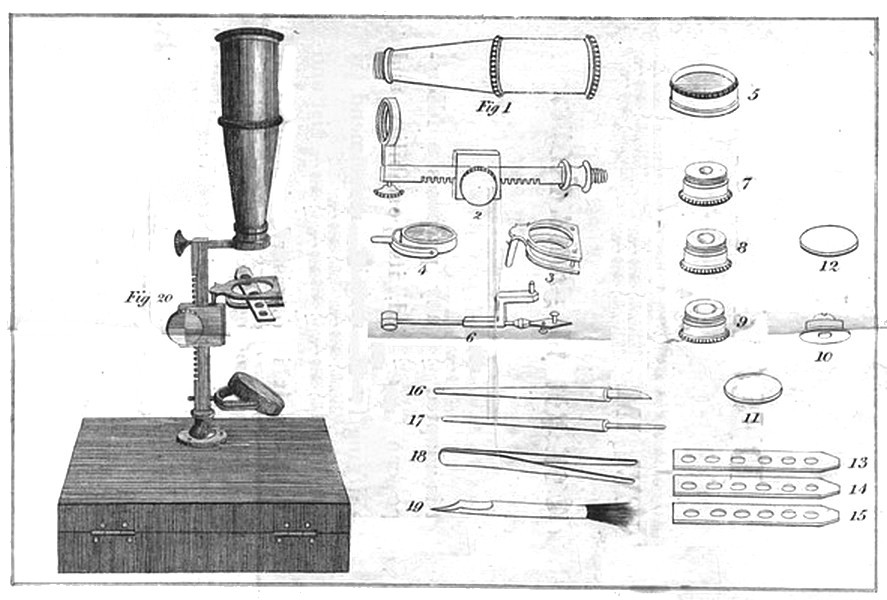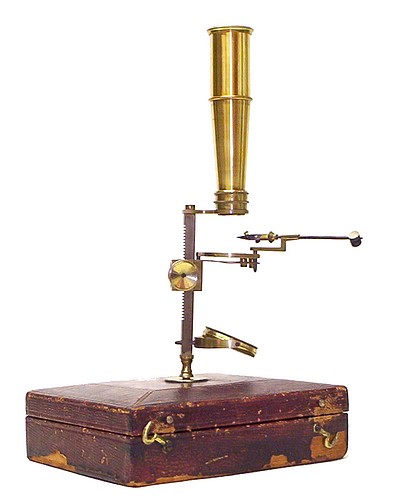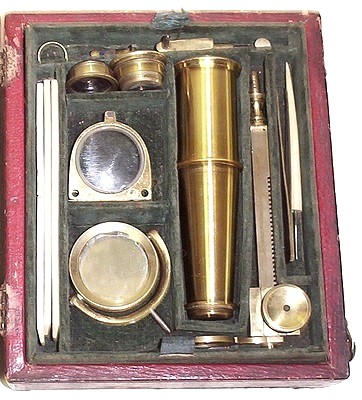The following image and description was taken from the instruction sheet that accompanies this microscope:

DESCRIPTION
OF A
NEW IMPROVED POCKET
COMPOUND MICROSCOPE
DESCRIPTION.
1 - Body of the microscope.
2 - The square Pillar of the Microscope, on which the stage (fig. 3) mores in a horizontal position up or down by a fine rack work of tooth and pinion.
3 - The Stage which has springs underneath for holding the slides that contain the Objects, also a hole for the forceps.
4 - A Concave Mirror, for illuminating transparent Objects upon the stage.
5 - A Bug Box, consisting of a Concave Glass, and a plane one screwed over it, by which means any Insect may be contained and viewed alive. This is placed on the stage, fig. 3.
6 - The Forceps or Plyers, for holding any Object, by which it may be very readily applied to the focus of the Lens.
7, 8, and 9 - Are three Lenses of different magnifying Powers, which when used are screwed on the end of the Microscope, and in order to give a great Magnifying Power, they are made to screw into each other, by which means you have six different powers.
10 - Is an additional Magnifier of a very deep power to be used singly by being screwed into the arm of the Microscope, for the examination of extreme minute objects.
11 - A Circular piece of ivory with one side white, the other black, for Opake Objects of different Colours and Hues.
12 - Is a Plano concave Class to be placed on the stage of the Microscopc for the placing any fluid to be viewed.
13, 14, and 15 - Are three Ivory slides filled with various curious Objects.
16 - A dissecting Knife.
17 - A steel Point to hold the Object.
18 - A pair of Nippers for taking up any Object to be examined.
19 - A Camel's Hair Brush at one end, for cleaning (he Glasses, Lenses, &c. the other end is cut pen fashion, for taking up Fluids, &c. and readily placing them for view on the glass of the Bug Box, or Plano - Concave, No. 12.
20 - The whole put together and screwed to the top of the box for use.





